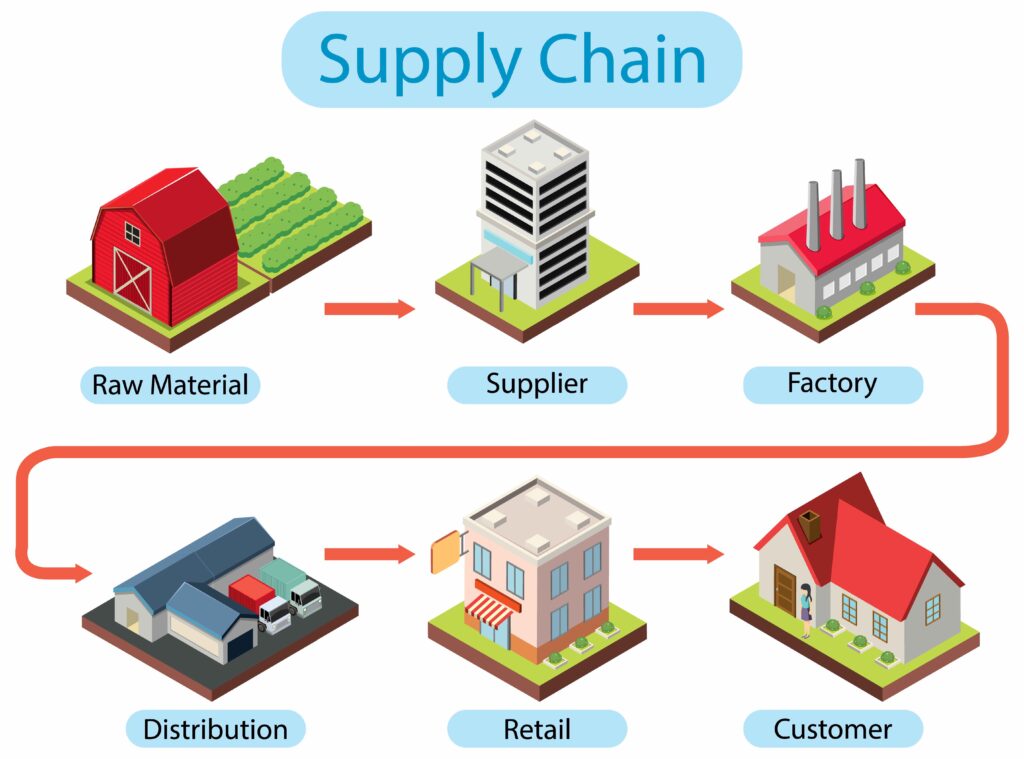The Most Pressing Challenge for Small Businesses in Kitsap County Today
Small businesses play a crucial role in Kitsap County’s economy. They provide jobs, services, and products that keep the community vibrant and thriving. However, running a small business is not easy. Many small business owners face several significant challenges that make it hard to succeed.
The most significant problem? It’s a tough mix of money issues, complicated rules, and strong competition.
- Money Issues (Financial Constraints): Many small businesses struggle to get the money they need to grow and operate. Banks have strict rules for giving out loans, and the interest rates can be high. This means small businesses often can’t get the funds they need to hire more people, buy more stock, or invest in marketing.
- Complicated Rules (Regulatory Burdens): There are many laws and regulations that small businesses must follow. These rules cover everything from health and safety to paying taxes. Keeping up with these regulations can be time-consuming and costly.
- Strong Competition: Small businesses have to compete with larger companies and online stores. These bigger businesses can offer lower prices and more convenience because they have more resources. This makes it hard for small businesses to attract and keep customers.
Understanding these challenges is the first step towards finding solutions and helping small businesses in Kitsap County thrive.
Financial Challenges for Small Businesses

Money Issues (Financial Constraints):
One of the biggest challenges small businesses face is getting enough money to run and grow their business. This is often called “access to capital.”
Getting Loans is Hard: Many small businesses need loans to help with things like buying inventory, hiring employees, or marketing their products. However, getting these loans is not easy. Banks have very strict rules and requirements, making it hard for small businesses to qualify.
High-Interest Rates: Even when a small business does get a loan, the interest rates can be very high. This means they have to pay back much more money than they borrowed, which can be a big burden.
Limited Growth: Without enough money, small businesses can’t grow. They can’t hire more people, buy more products to sell, or spend money on advertising to attract new customers. This limits their ability to succeed and compete with larger businesses.
In simple terms, small businesses often struggle to get the money they need because of tough bank rules and high costs. This makes it hard for them to expand and improve their services.
Understanding Regulatory Challenges for Small Businesses

Complicated Rules (Regulatory Burdens):
Another major challenge for small businesses is dealing with all the rules and regulations set by the government. These rules are often called “regulatory burdens.”
Lots of Rules to Follow: Small businesses in Kitsap County have to follow many different rules. These include health and safety regulations, tax requirements, and other legal obligations. Each rule is important to ensure businesses operate safely and fairly.
Health and Safety Regulations: These rules make sure that businesses are safe for employees and customers. For example, restaurants must follow strict guidelines to keep food safe. Following these rules can be time-consuming and often requires specific knowledge and training.
Tax Filings: Every business has to pay taxes and file the correct paperwork on time. This involves keeping detailed records of income and expenses and understanding various tax codes. Mistakes can lead to fines and other penalties.
Consumes Time and Resources: Complying with all these rules takes a lot of time and effort. Small business owners often spend hours filling out forms, keeping records, and making sure they meet all legal requirements. This can take away time and energy from running and growing their business.
In simple terms, small businesses have to spend a lot of time and money making sure they follow many government rules. This can be a big burden and make it harder to focus on their core business activities.
Understanding Competition Challenges for Small Businesses

Strong Competition (Fierce Competition):
Small businesses often face tough competition from larger companies and online stores. Here’s why this competition can be a big challenge:
Big Businesses Have Advantages: Large companies and online retailers have several advantages over small businesses. They can buy products in bulk at lower prices, known as “economies of scale.” This allows them to sell products cheaper than small businesses can.
Advanced Technologies: Big businesses also have access to the latest technologies. They use advanced software and systems to manage their operations more efficiently. This helps them provide better services, faster delivery, and an overall better customer experience.
Price and Convenience: Because of these advantages, larger businesses can often offer lower prices and more convenience to customers. For example, an online retailer might offer free shipping or faster delivery options, which small businesses may not be able to afford.
Impact on Small Businesses: For small businesses, competing with these big players can be very tough. They might not be able to match the low prices or the convenience that big companies offer. This makes it harder to attract and keep customers.
In simple terms, small businesses face strong competition from larger companies that can offer lower prices and more convenient services. This makes it challenging for small businesses to compete and succeed.
Understanding Workforce Challenges for Small Businesses

Finding and Keeping Good Employees (Workforce Challenges):
One of the major issues small businesses face is hiring and keeping skilled workers. Here’s why this can be so difficult:
Hiring Skilled Employees: Finding workers with the right skills and experience can be tough. Skilled employees are in high demand, and there are often not enough to go around. This makes it hard for small businesses to find the right people to hire.
Competition from Larger Companies: Big businesses can offer higher salaries and better benefits, such as health insurance, paid vacations, and retirement plans. Small businesses often can’t afford to match these offers, making it hard to attract and keep the best employees.
High Turnover Rates: Because small businesses can’t always offer the same pay and benefits, employees might leave for better opportunities at larger companies. This is called “high turnover.” When employees leave frequently, it means the business has to spend more time and money on hiring and training new workers.
Less Experienced Workforce: With high turnover, small businesses often end up with a less experienced workforce. New employees need time to learn the ropes and become productive. Constantly training new hires can slow down the business and reduce efficiency.
In simple terms, small businesses struggle to hire and keep good employees because they can’t offer as much money and benefits as big companies. This leads to frequent employee changes and a workforce that is often less experienced.
Understanding Technological Challenges for Small Businesses

Staying Updated with Technology (Technological Advancements):
Using the latest technology is very important for small businesses, but it can be challenging. Here’s why:
Importance of Technology: New technologies can help businesses work more efficiently, provide better customer service, and stay competitive with other businesses. For example, using modern software can help manage inventory, process payments faster, and improve marketing efforts.
Need for Investment: To benefit from these technologies, small businesses need to invest money in buying and implementing them. This might include purchasing new computers, software, or other equipment. They may also need to pay for training to learn how to use these new tools effectively.
Limited Budgets: Small businesses often have limited budgets. Unlike larger companies, they don’t have a lot of extra money to spend on new technologies. This makes it hard to keep up with the latest advancements.
Lack of Expertise: Understanding and using new technology can be complicated. Small business owners and their staff might not have the technical knowledge needed to make the best use of these tools. This can lead to frustration and inefficient use of the technology.
In simple terms, small businesses need to use the latest technology to stay competitive, but they often don’t have enough money or technical knowledge to do so effectively. This makes it challenging for them to keep up with larger companies.
Understanding Marketing Challenges for Small Businesses

Getting Noticed (Marketing and Visibility):
Marketing is how businesses attract customers and make their products or services known. For small businesses, this is crucial but can be difficult. Here’s why:
Importance of Marketing: Effective marketing helps businesses reach new customers, build their brand, and increase sales. This includes activities like advertising, social media promotion, and creating engaging content.
Need for Investment: Successful marketing often requires spending money. This can include costs for online ads, hiring marketing experts, or using special software to manage campaigns. Investing in these areas can help small businesses stand out from the competition.
Digital Marketing Strategies: In today’s world, digital marketing (promoting businesses online) is very important. This includes having a good website, being active on social media, and using online advertising. These strategies help businesses reach a larger audience.
Limited Resources: Many small businesses don’t have enough money to spend on comprehensive marketing campaigns. They might also lack the staff or time needed to focus on marketing activities. This makes it hard to compete with larger businesses that have bigger marketing budgets.
Lack of Knowledge: Marketing, especially digital marketing, can be complex. It involves understanding how to target the right audience, creating compelling content, and analyzing results to improve strategies. Small business owners may not have the expertise needed to do this effectively.
In simple terms, marketing is essential for attracting customers, but small businesses often struggle because they don’t have enough money or knowledge to do it well. This makes it difficult for them to get noticed and grow.
Understanding Supply Chain Challenges for Small Businesses

Problems with Getting Supplies (Supply Chain Issues):
A supply chain is the system of getting products and materials from suppliers to your business so you can sell them. When there are problems in this system, it can cause big issues for small businesses. Here’s why:
What Are Supply Chain Disruptions? Supply chain disruptions happen when there are delays or issues in getting the supplies you need. This can be caused by various factors such as natural disasters, transportation problems, or supplier issues.
Limited Number of Suppliers: Small businesses often depend on a small number of suppliers for their products. This means they don’t have many options if one supplier has a problem. Larger businesses might have multiple suppliers and can switch if one fails, but small businesses don’t always have this flexibility.
Impact of Disruptions: When there is a disruption, small businesses can experience:
- Delays: If supplies are delayed, it can slow down production and delivery to customers.
- Increased Costs: Finding new suppliers quickly or paying for expedited shipping can be expensive.
- Lost Sales: If you can’t get products to sell, you might lose customers who go elsewhere.
Real-World Example: Imagine you run a small bakery and get flour from a specific supplier. If that supplier suddenly can’t deliver flour because of a transportation strike, you won’t be able to bake your products. You’ll either have to find another supplier quickly, which might cost more, or wait, resulting in no products to sell and unhappy customers.
In simple terms, small businesses often rely on a few suppliers for their products. If something goes wrong in the supply chain, it can cause delays, cost more money, and lead to lost sales. This can have a big impact on the business’s success.
Understanding Customer Expectations for Small Businesses

Meeting Customer Expectations:
Today’s customers have high expectations. They want fast, high-quality service and products. For small businesses, meeting these expectations is crucial but can be tough. Here’s why:
High Customer Demands: Customers now expect quick service, excellent products, and seamless experiences. They want to receive their orders promptly, have access to friendly and efficient customer service, and enjoy high-quality goods.
Importance of Meeting Expectations: If a small business can meet these high expectations, customers are more likely to return and recommend the business to others. Satisfied customers are essential for growing a business and building a good reputation.
Challenges for Small Businesses: Small businesses often have limited resources, such as money, staff, and time. This can make it difficult to provide the same level of service and quality that larger companies offer. For example, a small business might not have enough staff to handle customer inquiries quickly or enough funds to invest in fast shipping options.
Real-World Example: Imagine you run a small online store. Customers expect their orders to be processed and shipped within a day or two, and they want quick responses to their questions. If you’re the only person managing everything, it can be challenging to keep up with these demands. Delays in shipping or slow responses can lead to unhappy customers.
Balancing Act: To succeed, small businesses need to find ways to meet customer expectations despite their limitations. This might involve streamlining operations, using efficient tools, or prioritizing excellent customer service.
In simple terms, customers today expect quick and high-quality service. Small businesses must meet these expectations to keep their customers happy, but doing so can be challenging due to limited resources. Finding a balance is key to success.
Understanding the Importance of Community Support for Small Businesses

Getting Help from the Community (Community Support):
Support from the local community is crucial for small businesses. Here’s why and how it works:
Why Community Support Matters: When people in the local area support a small business by shopping there or spreading the word, it helps the business grow. Community support means local customers choose to buy from the small business instead of bigger companies.
Building Relationships Takes Time and Effort: Creating strong connections with the community doesn’t happen overnight. It requires consistent effort. This might include participating in local events, supporting local causes, and engaging with customers both in person and online.
Benefits of Community Support:
- Loyal Customers: When the community feels connected to a business, they are more likely to become repeat customers.
- Word-of-Mouth Advertising: Happy customers will tell their friends and family, bringing in more business.
- Positive Reputation: A strong community presence can enhance the business’s reputation, making it more attractive to new customers.
Challenges Without Community Support: If a small business doesn’t have the community’s backing, it can be hard to succeed. Lack of local support can mean fewer customers, less sales, and more difficulty competing with larger businesses.
Real-World Example: Imagine you own a small coffee shop. By getting involved in local events, sponsoring a youth sports team, or simply getting to know your regular customers, you build a sense of community. People start to see your coffee shop as a vital part of the neighborhood, and they choose to support you over bigger chains.
In simple terms, community support is essential for the success of small businesses. It takes time and effort to build these relationships, but the benefits of loyal customers, word-of-mouth promotion, and a positive reputation are worth it. Without the community’s support, small businesses may find it hard to thrive.
Understanding Government Assistance for Small Businesses

Help from the Government (Government Assistance):
There are programs from the government designed to help small businesses, but many small business owners don’t use them. Here’s why and how to make the most of these resources:
Available Programs: The government offers various assistance programs to support small businesses. These can include loans, grants, tax incentives, and training programs. These resources are meant to help businesses start, grow, and overcome challenges.
Lack of Awareness: Many small business owners simply don’t know these programs exist. They might not hear about them or understand what’s available. This means they miss out on valuable help that could make a big difference.
Complex Application Processes: Even when business owners know about these programs, applying for them can be difficult. The application forms can be long and confusing, with many detailed requirements. This can discourage business owners from applying.
How to Navigate the Process:
- Research: Take time to learn about the different programs available. Look for information on government websites, business support organizations, or local chambers of commerce.
- Seek Help: Don’t be afraid to ask for assistance. There are organizations and advisors that can help you understand the application process and guide you through it.
- Stay Organized: Keep detailed records and documents that might be needed for applications. This includes financial statements, business plans, and proof of eligibility.
Real-World Example: Imagine you run a small retail shop and need funding to expand. There might be a government loan program that offers low-interest loans to small businesses. By researching and applying for this loan, you could get the money you need to grow your business without facing high-interest rates from a bank.
In simple terms, there are government programs to help small businesses, but many owners don’t know about them or find the application process too complicated. By researching, seeking help, and staying organized, you can take advantage of these valuable resources to support and grow your business.
Understand This: How to Help Small Businesses Succeed
Tackling Challenges from All Angles (Conclusion):
To help small businesses overcome their challenges, we need to address several key areas. Here’s what needs to be done:
Better Access to Money (Capital): Small businesses need easier ways to get loans and funding. This means banks and financial institutions should have simpler and more flexible options for small businesses to borrow money. This helps them grow, hire more staff, and invest in their business.
Simpler Rules (Streamlined Regulations): The government should make it easier for small businesses to follow the rules. This can be done by reducing unnecessary regulations and simplifying the processes for things like taxes and safety compliance. When rules are easier to understand and follow, small businesses can spend more time focusing on their business.
Stronger Support Systems: Small businesses need more support from local organizations, community groups, and the government. This includes providing information about available resources, offering training and workshops, and creating networks where small business owners can share advice and support each other.
Why This Matters: Small businesses are incredibly important to our community. They create jobs, offer unique products and services, and add to the local culture. When we help small businesses succeed, the whole community benefits.
A Thriving Business Environment: By understanding the challenges small businesses face and working together to solve them, we can create a strong and vibrant business environment in Kitsap County. This means a place where small businesses can grow and thrive, benefiting everyone in the community.
In simple terms, to help small businesses in Kitsap County succeed, we need to make it easier for them to get money, simplify the rules they have to follow, and provide strong support systems. Small businesses are vital to our community, and by addressing their challenges, we can ensure they continue to grow and contribute to a thriving local economy.
